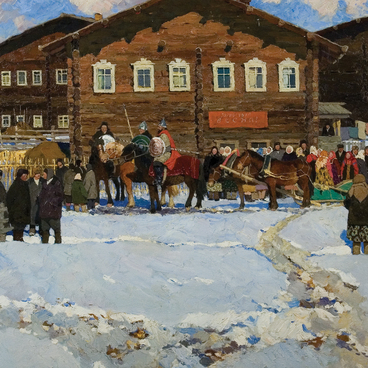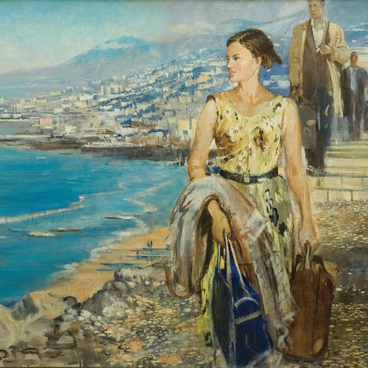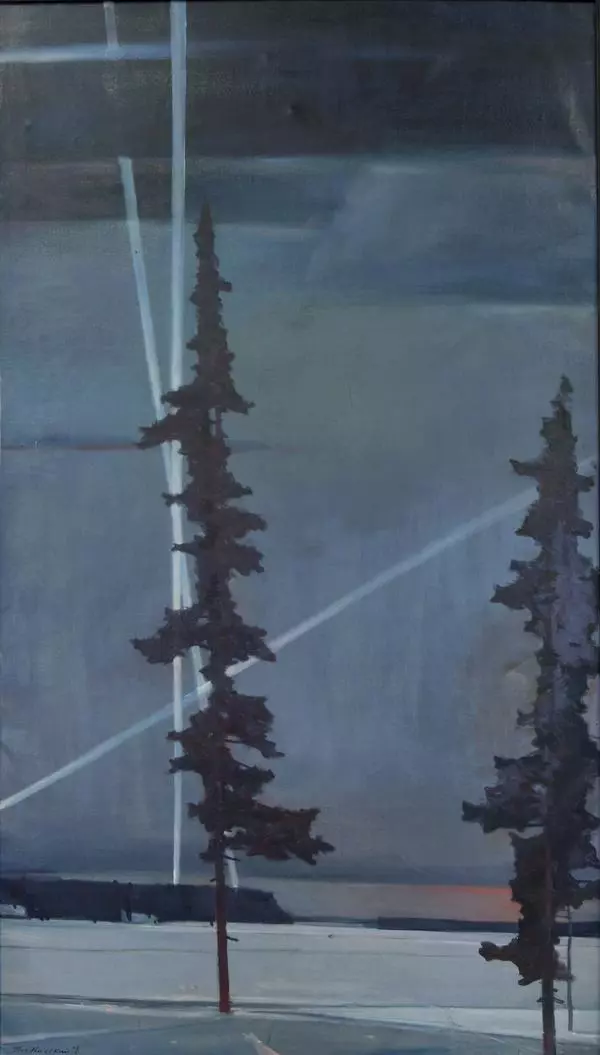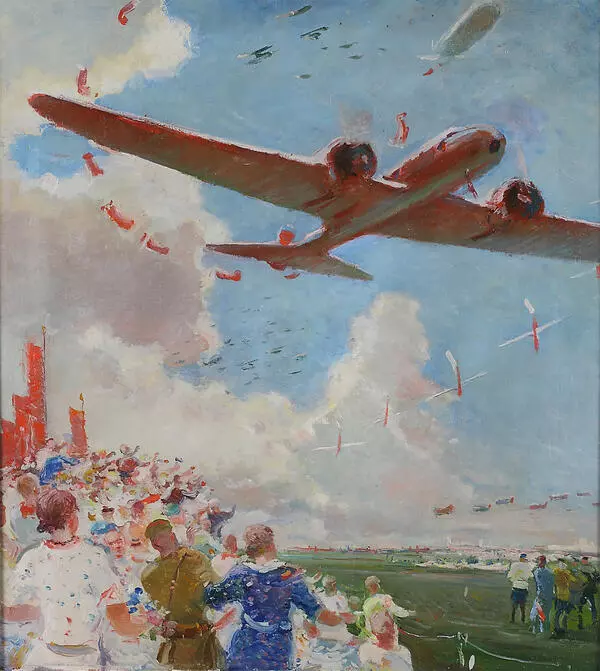The artist Georgy Grigorievich Nissky was born in 1903. His birthplace was the Novobelitsa junction railway station near Gomel, where the father of the future artist served first as a paramedic and then as a doctor. Nissky’s childhood years were spent in fascination with steam locomotives, railways, and machinists. The love of railways and trains remained with the artist for the rest of his life and was reflected in his art.
Nissky received his first art lessons from a soldier, gunsmith Petrov, who showed the boy his copies of paintings by Rufin Sudkovsky and Mikhail Shishkin. A little more time passed, and Nissky himself painted a copy of Shishkin’s “Kama, ” in which he noticeably surpassed his teacher. This copy finally sealed his fate.
In 1921, Nissky was sent to Moscow to continue his art education and in 1922 entered the preparatory department of the VKhUTEMAS (Higher Art and Technical Studios).
In cold, unheated rooms, he and other students diligently painted still lifes: pots and trays, vases with artificial flowers and so on. In 1923, the artist transferred to the department of painting, where his teachers were Robert Rafailovich Falk and Alexander Davydovich Drevin. In parallel with his studies, he worked in a printing house and paid a lot of attention to sports, in particular volleyball. The plots of Nissky’s first famous works, created in the early 1930s, seem to be inspired by memories of childhood spent at the station; they are dominated by railway themes.
Later, Nissky traveled a lot around the country. The impressions received by the artist on trips, he colorfully and vividly embodied in his canvases. The painting from the collection of the Voronezh Museum named after Ivan Kramskoy was created in the late period of the artist’s work. At that time, the artist turned to the marine theme and battle painting. The artist often went on car trips, where he created original landscapes. In studies he made in port cities, Nissky tried to get on board some sailing ships.
The work “Storm Is Coming” presented in the
museum’s collection was received by the Voronezh Museum in 1962 from the
Directorate of Art Funds and the Design of Monuments of the Ministry of Culture
of the RSFSR.







